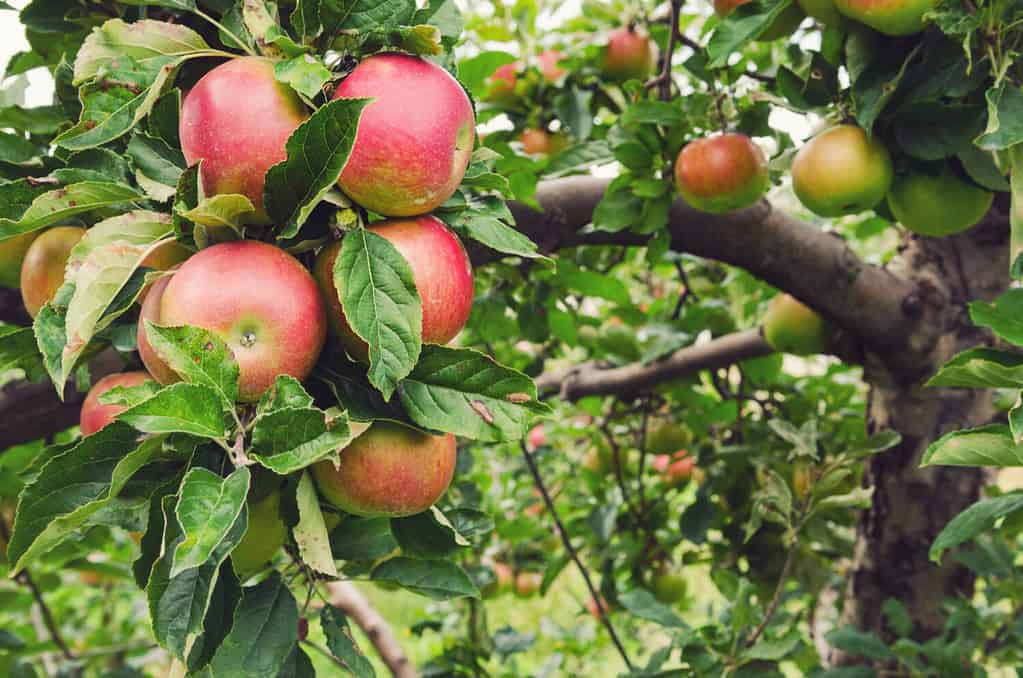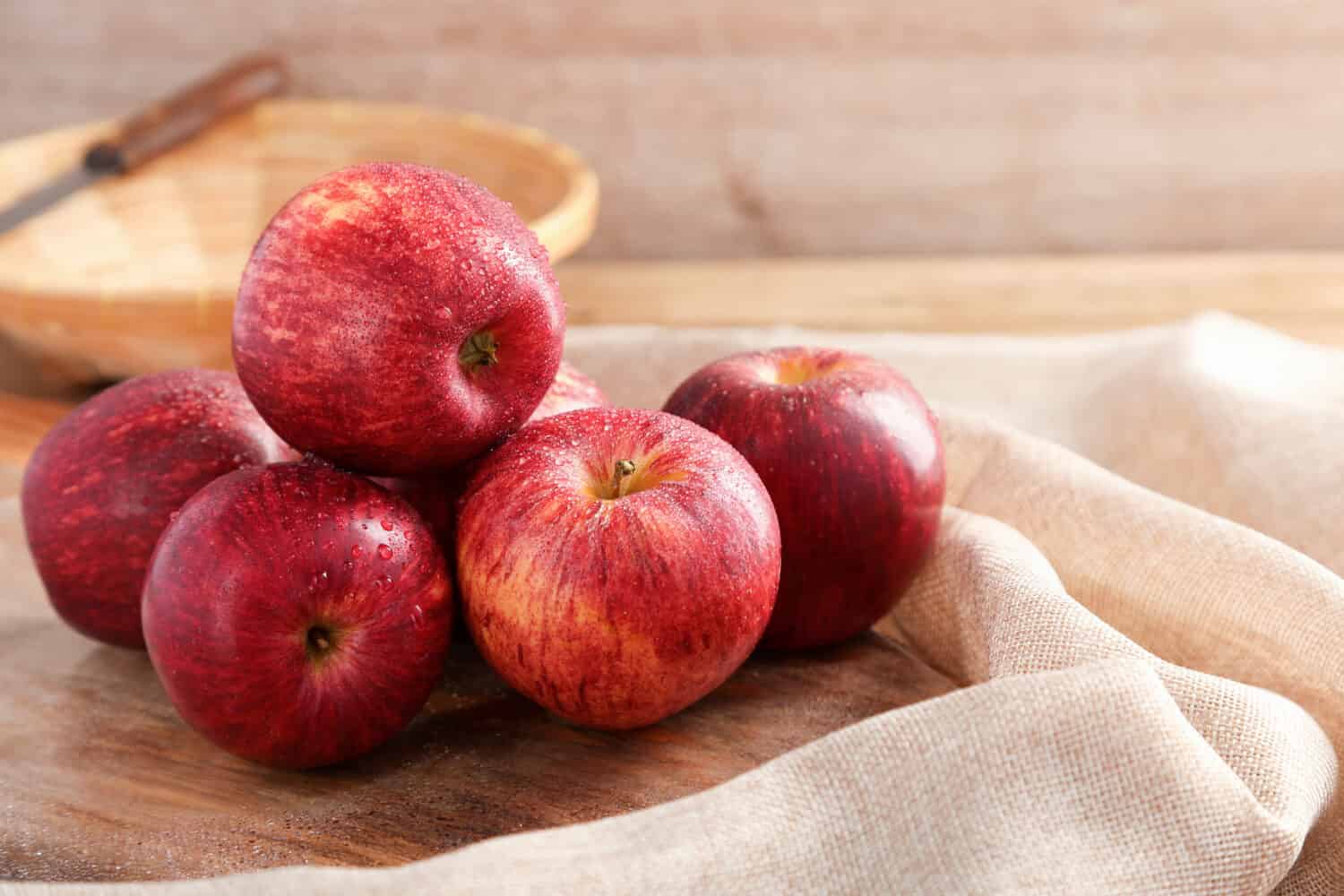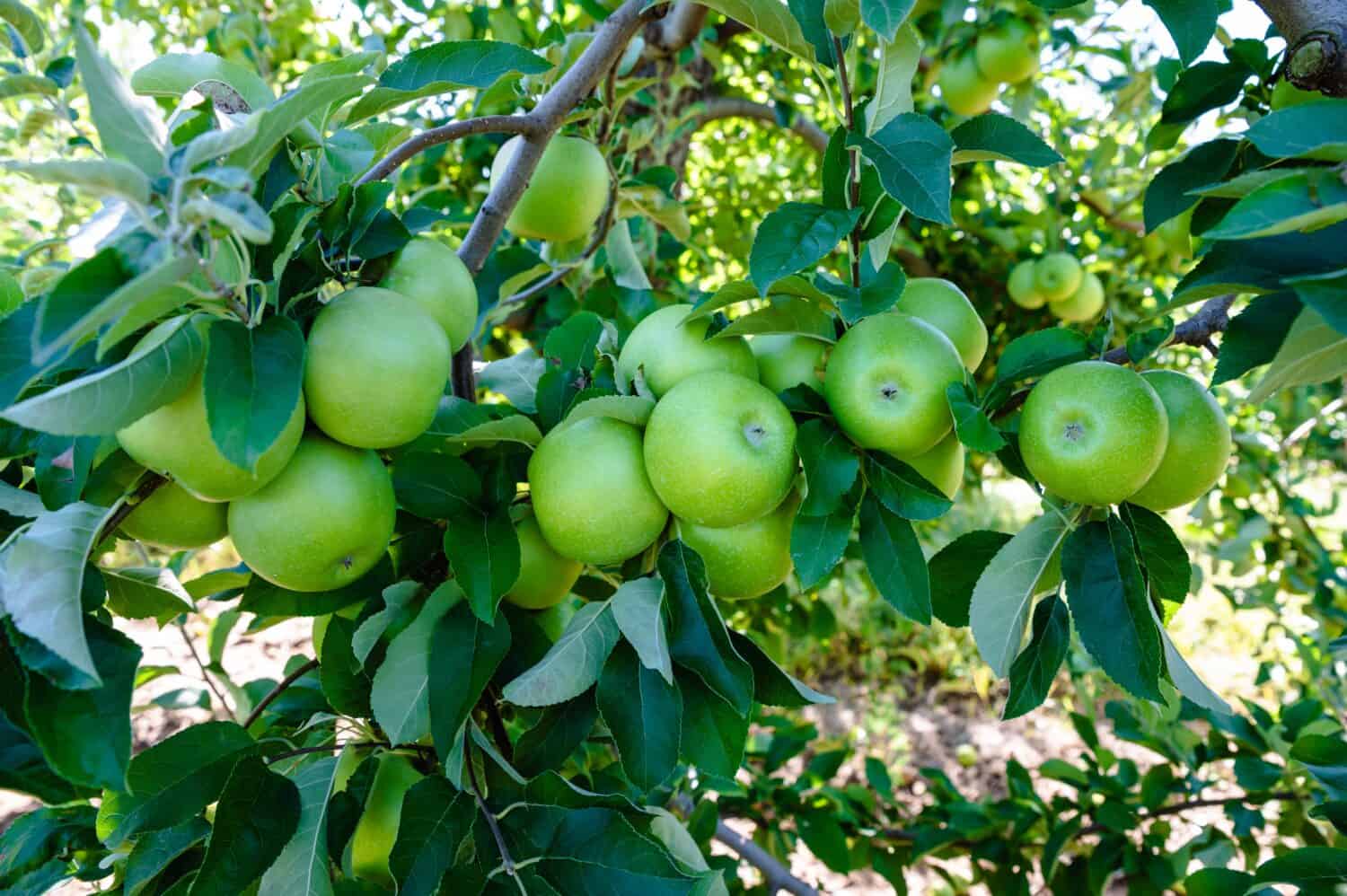Autumn is nearing and you know what that means. Halloween, pumpkin patches, fall festivals, costumes, crisp weather, and apple harvest season. Yes, that’s right. One of people’s favorite autumnal activities is going to an apple orchard and picking some apples for fun. These are age-old traditions that families have relished for more than a hundred years.
The best part about picking apples at an orchard is you can bring them back with you. You can eat one every day. And you know what they say, “An apple a day keeps the doctor away.” Although, indeed, eating an apple a day won’t negatively affect your health, you shouldn’t rely just on eating apples to keep healthy.
For those of you wondering when is the peak season for apples so you can round up your family and trek up to an orchard for good, old-fashioned apple picking (and taking selfies), we’ll explore all about when apples are in peak season. We will also explore what states are the best apple harvest states, the variety of apples that exist, and other fun facts about one of our favorite fruits.

The phrase “American as apple pie” was coined after World War II, but it all began when evangelist Johnny Appleseed wanted more Americans to plant apple trees.
©Julie Marshall/Shutterstock.com
When Is Peak Season?
When the weather gets crisper and the leaves start changing, that’s a tell-tale that apple-picking season is among us. The peak season for apple harvesting is in September. That’s when most apples are perfect. So if you’re wondering when you can go to your local apple orchard and pick some apples as a fun family activity, then September is it!
Of course, different apples are ripe and perfect for picking at different times. For example, the Gala and McIntosh varieties are early apples. That means they’re ready in August. As for the Fuji variety, that one is not ready until late October-November. However, most of them are ready just in time for fall to begin.
How can you tell if an apple is ripe and ready for picking? Well, make sure you check off a list.
- The apple feels firm, not too hard, and not too soft.
- The apple seeds are brown, not white.
- The inside of the apple is a cream color, as opposed to light green.
- The stem can easily be pulled off from the branch.
- If you take a bite from the apple, it’s crisp and tastes either sweet or a bit tart (depending on the variety).
Best States for Harvesting

Although apples have become synonymous with the US, only one apple comes from North America and that is the crabapple.
©Serhii Hrebeniuk/Shutterstock.com
The United States is the second largest producer of apples. And many states have orchards for apple harvesting, but there are a few that take the top prize for the best states in the US for all things apples.
Washington
Washington is the top producer of apples in the United States. With its amazing apple growing conditions, they bushel more than 100 million 40-pound boxes of apples per year.
New York
New York is number two in apple production, busheling upwards of one billion pounds of apples per year. And it makes sense, their climate is perfect for apple harvesting.
Michigan
Finally, Michigan is number three, where they bushel close to New York’s total of one billion pounds of apples per year.
Origins of the Apple in America
The most consumed fruit in the world’s origin is unknown. Scientists believe it may have originated in Asia, but others say wild apples grew in Western Europe. However, recent studies featured in the journal Plos Genetics have indicated new insight into the origin of domesticated apples. It was European settlers who came to the US and brought apple seeds with them. They planted apple trees and discovered the apples were bitter. Although they weren’t the best for eating, they were perfect for making hard apple cider.
William Blackstone of Boston planted the first apple orchard in 1625. From then, hundreds of thousands of acres were planted throughout the United States. Most apples were used for cider, but when Prohibition was enacted in 1918, many people cut down apple trees for their relation with alcohol. It decimated many varieties of apples. Apples, though, made a resurgence, and are now eaten and drunk in many ways — as snacks, in pies and pastries, as a juice, and more.
International Kinds of Apples

The most popular apples in the US are Gala apples.
©BirdShutterB/Shutterstock.com
Apples aren’t native to the US, but they have now become synonymous with American patriotism. A total of 2,500 apples have been cultivated in the United States at some point in time, but there have been around 7,500 known varieties of apples in the world. Here are a few apples that are grown elsewhere and more internationally known.
McIntosh apples
This variety of apples was discovered in Canada by John McIntosh in 1871 and they are slightly sweet in flavor.
Fuji apples
Contrary to popular belief, Fuji apples are not named after Mount Fuji in Japan. They are named after the town they were produced in. Fuji apples were developed by cross-pollinating two varieties of apples — red delicious and Virginia Ralls Janet. They are extremely sweet and quite popular, but expensive because Japan’s climate isn’t naturally suitable for apples.
Gala apples
Gala apples were discovered in New Zealand in 1934. Since then, they have been used in salads, sauces, and juicy snacks because of their sweet taste.
Granny Smith apples
These are one of the most famous varieties of apples and they were developed in Australia. It is believed that a woman named Maria Ann Smith found an apple seedling near her house and when it grew, they were green. She found they were crisp and sour but perfect for cooking.
Apple’s Health Benefits

Americans aren’t the only ones that love apples. It was said that in Greek mythology, apples were seen as magical.
©Scott Stephens/Shutterstock.com
An apple a day does ensure you are healthier than not, but it won’t save you from going to the doctor. You still have to do your regular check-ups to make sure everything is good. However, apples do have health benefits that are worth talking about.
In an article in the journal, Trends in Food Science & Technology, scientists analyzed the cardiovascular health benefits of apples. They determined that apples give you a positive outcome in anything heart-related, including blood pressure, vascular function, hyperglycemia, and inflammation.
Besides that, apples have more health benefits. They can help you lose weight because they are low in calories, they can reduce your chances of developing diabetes, they can help you combat asthma, and they can improve your digestion system. Apples are also a good source of fiber and they contain several nutrients that improve your general health — both physical and mental.
Conclusion
And there you have it, the peak season for apples in the United States happens in September. There are a few exceptions at other times of the year, but they are mostly at the beginning of the autumnal season.
The start of fall is a time for family. The weather gets crisper, the leaves start falling, and you can plan out family adventures. So for the orchard trek, go ahead and pick out autumnal outfits for the whole family, gather them around, and go apple picking at your nearest orchard. It’s an American timeless tradition that the whole family will enjoy.
Take pictures, reminisce about old times, laugh about the funny days, and have a wonderful day. And while you’re on the car ride home, plan your next family trip to a pumpkin patch. Those pumpkins aren’t going to carve themselves!
The photo featured at the top of this post is © Ken Schulze/Shutterstock.com
Thank you for reading! Have some feedback for us? Contact the AZ Animals editorial team.







